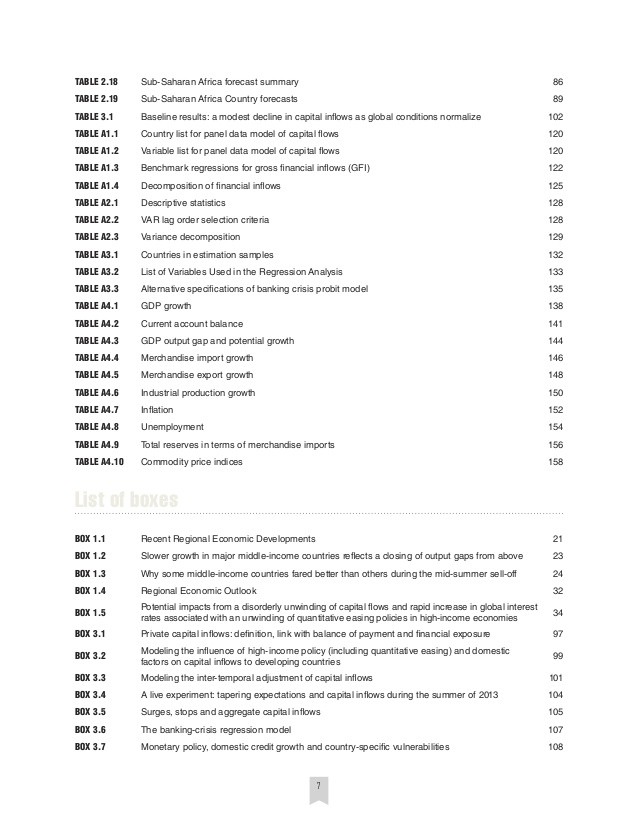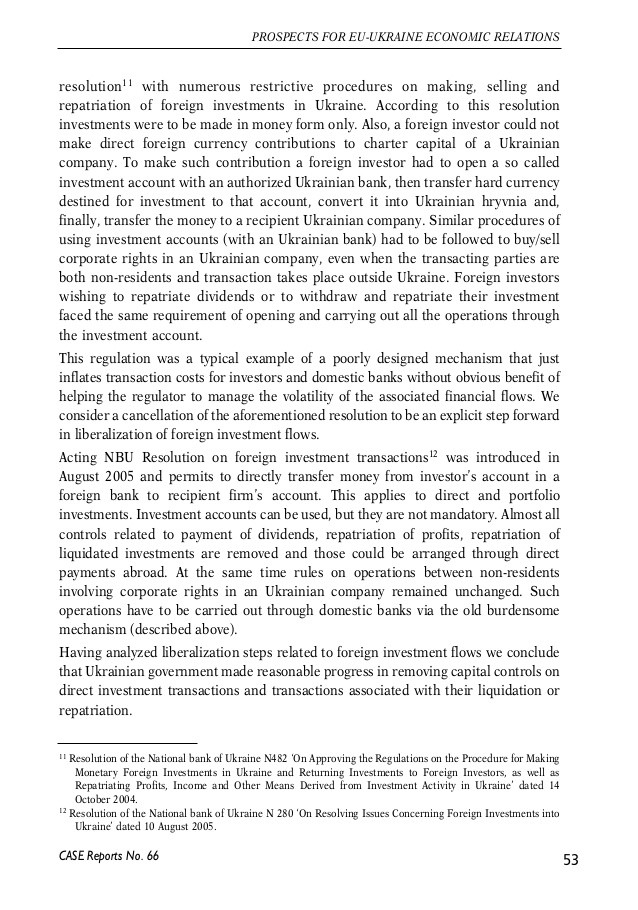Foreign Direct Investment in Ukraine Prospects and Pitfalls
Post on: 11 Июнь, 2015 No Comment

23/05/2006 |
Manchester University’s Stefan Lutz argues that the recent slowdown in foreign investment has slowed down growth, rather than the other way round.
Ukraine: After Russia Biggest of the CIS Countries and Direct Neighbor to European Union.
With an area of just over 600 thousand square kilometers and a population of close to 50 million, Ukraine is a country of about the size of France. But while France is the fifth-largest world economy, Ukraine’s gross domestic product (GDP) of USD 60 billion is thirty times smaller and therefore still in the range of that of a developing country. In consequence, when it comes to trade, Ukraine behaves like a “small country”, i.e. its trade volume (sum of exports and imports) as a share of GDP is very large; in fact, with 115 percent it is similar to that of a small country like Luxembourg.
But Ukraine is also the second-largest independent country left over from the former Soviet Union; it is the largest Eastern European neighbor of the European Union; it has a large domestic consumer market; it has a large industrial base – specifically in chemistry and metallurgy – and a well-educated work force. So we should think that Ukraine has enormous economic growth potential and we should expect that it be very attractive to foreign investors.
Aggregate levels of FDI inflow into Ukraine used to be low but may be rising.
In fact, GDP grew by close to 10 percent in 2003 and even 12 percent in 2004. In correspondence, foreign direct investment (FDI) has surged from an accumulated USD 9 billion in mid-2004 to about USD 16 billion at the beginning of 2006. However, since then both GDP growth and FDI inflows have decreased again significantly. While GDP growth in 2005 and 2006 is projected to reach only about five percent per annum, yearly FDI inflows have fallen by about fourteen percent.
FDI inflows into Eastern Europe are about four percent of GDP on average with lower inflows for larger countries such as Russia and also Ukraine. Ukraine’s inflows used to be up to two percent of GDP, but have risen significantly since 2004 and may surpass five percent for 2006. For comparison, this would be in the same ball park percentage-wise as FDI into China.
By 2006, accumulated FDI into Ukraine reached about USD 16 billion. Close to three-quarter of FDI came from the newly enlarged 25-member European Union. While Germany accounts for the largest national FDI stock (USD 5.5 billion), it is noteworthy that about ten percent of total FDI came from Cyprus. This makes Cyprus a larger investor than for example the United Kingdom or Russia. In comparison, by mid-2005, the United States contributed about 14 percent of FDI to Ukraine.
More than a quarter of this investment went into metallurgy. Other attractors of foreign funds were wholesale trade and the financial sector with seven percent each, the food industry with about six percent, and chemicals with about four percent. FDI is highly regionally concentrated with more than 80 percent of FDI flowing into the areas of Kiev, Donetsk, Zaporizhzhia, Poltava, Crimea, Odesa, Dnipopetrovsk, and Lviv. The past establishment of so-called free economic zones (FEZ) has promoted both FDI into and exports from these regions in the past.
The recent abolishment of FEZs has now made investments in other areas more attractive again. While the abolishment of FEZs was aimed at stopping money laundering schemes, it seems to have harmed some legally-operating Western investors also. This has probably contributed to the sudden downturn of FDI inflows in 2006. However, the existence of FEZs is not the most decisive long-run factor in encouraging or discouraging FDI.
FDI targets high productivity and export markets.
Note that main FDI targets, metallurgy, chemicals, energy and agricultural products, are also the only major export goods categories. An important exception to this is food processing where investments are geared also towards serving a large domestic market. Currently, attractive sectors also include wholesale trade, specifically imports, retail trade and real estate. While firms receiving FDI seem to exhibit higher productivity than other firms, FDI also seems to promote increased exports, both at the level of the individual firm and at the national level. A large part of FDI in Eastern and Central European economies seems to be aimed at establishing upstream linkages, that is, it aims at establishing or acquiring cost-efficient input producers for internationally active foreign companies. This is also consistent with the high correlation between received FDI and exports in Ukrainian industries.
Main drive behind FDI is government’s sale of state-owned enterprises: Large firms retaining some state-ownership while being under foreign majority ownership do best.
Large government sales of state-owned enterprises, such as the sale of Kryvorizhstal in 2005, seem to be the major driving force behind FDI. In contrast, new “Greenfield” investment activity is relatively low – even less investment projects than in smaller countries such as Bulgaria – and relatively unsuccessful.
In general, privatized former state enterprises with some Ukrainian state-ownership do better than wholly foreign-owned startups. However, this is only true as long as state-ownership does not retain a controlling majority. Among former state enterprises retaining some significant Ukrainian state ownership share, those that are majority-owned by foreign investors seem to do best. Small firms seem to be at a disadvantage.
This suggests that foreign investment may have highest chances for success when two conditions are satisfied: 1.) The foreign investor should aim to gain majority control. 2.) The target should be a large firm with some state-ownership and therefore established ties with political and economic players in Ukraine.
Growth slowdown discourages investors? Discouraged investors contribute to growth slowdown!
According to some analysts, it is the recent growth slowdown that discourages continued investment in Ukraine. In some sense, this is like putting the cart before the horse. Most foreign investment goes into industries producing for export and the rest goes into industries such as food processing, where the production is for basic necessities with stable demand. Other growth potential is for example in real estate, where effective demand by high-income groups and expatriates is again largely independent of past GDP growth. So it is more accurate to say that the slow-down in investment contributes to slower growth and that the ultimate factors discouraging investments lie elsewhere — with the institutional and regulatory environment in Ukraine.
From the view of the (potential) foreign investor, measures to be taken – besides targeting the right firms in the right industries — should include lobbying for both regulatory and institutional progress, securing guarantees and support from own governments, embassies, chambers of commerce, aid institutions, and helping building up political clout in Ukraine for small and medium-sized enterprises.
Sources: State Statistical Committee of Ukraine (ukrstat.gov.ua), Ukraine Securities and Stock Market State Commission (ssmsc.gov.ua), ForUm (for-ua.com), UNCTAD, UNECE, European Commission.
The author is Lecturer in Economics at the University of Manchester, England, and Senior Fellow at the Center for European Integration Studies (ZEI) in Bonn, Germany.

Related stories
MONGOLIA: OT mess holds up Mongolias advance
Falling commodity prices have hurt Mongolia’s economy, which relies heavily on its abundant natural resources. Improving relations with China are helping it through the squeeze but the country has yet to show its true potential to global investors
KAZAKHSTAN: Kicking Kazakhstan back into gear .
With every resource that it needs to become a wealthy country, Kazakhstan should be doing better, but its economy remains stubbornly tied to energy and metals prices. President Nazarbayev is running out of time to transform his nation
World Bank to commit $2bn to Myanmar
The World Bank’s East Asia chief, Axel van Trotsenburg, tells Emerging Markets why it is boosting its investment in Myanmar threefold.
LatAm bond party to go on in face of volatility
Rising US interest rates should in theory lead investors to withdraw money from emerging economies so those in Latin America suffering weak growth. But leading debt bankers feel that the party has some time to go.
CARIBBEAN DEBT: Lingering debt spectres highlight need for .
Jamaica is getting back on track and could become an unlikely poster child for the IMF. However, elsewhere in the Caribbean the threat of default looms and some countries are not ready to ask for help














